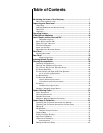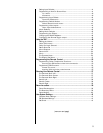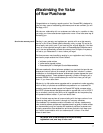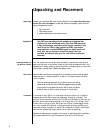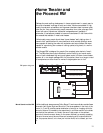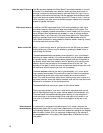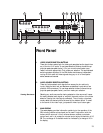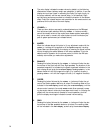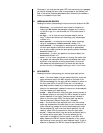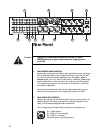
11
Home Theater and
the Proceed PAV
Perhaps the most exciting development in home entertainment in recent years is
the much-discussed “marriage of audio and video.” Movies are available in high
quality formats such as laserdisc, and big-screen televisions have improved vastly
over the dim, fuzzy pictures many people remember from a few years ago. Com-
bined with sound reproduced via several loudspeakers and (perhaps) a
subwoofer, it has become possible to have movie excitement in the home which
far exceeds that available in most local theaters.
Unfortunately, many people found these “home theaters” sadly lacking when it
came to their performance with more traditional music sources. Although some
were capable of shaking the walls with explosions and sound effects, few were
capable of reproducing the nuances of a string quartet, a big band, or a well-re-
corded vocalist.
The Proceed PAV is designed for people (like ourselves) who desire to “have it
all.” The PAV offers the musical refinement, control flexibility and movie excite-
ment of both a dedicated high end music system and a full-blown home theater
system, all in one simple package. With its introduction, there is no longer a need
to compromise on either music or movies. A single system can do it all.
PAV system diagram
LF
RF
Ctr
RS
LS
Listening Room
Sub
Surround Power Amplifier
Center/Sub Power Amplifier
Main (Front) Power Amplifier
RS
LS
Ctr
Sub
LF
RF
vcr cd tunerlaserdisc
PROCE E D
LU
C
A
S
FIL
M
®
pav
vcr 1 vcr 2laser disctv/aux
cd 1 cd 2 tape 1tape 2bal/auxtuner
thx
cinema
pro
logic
stereomono off
surround modepath
mainremotebothrecord
standby input leveldelay recall
ref. level
sub
rear
center
balance
master
mute
Movie Sound and the PAV Unlike traditional stereo sources, Dolby Stereo™ movie soundtracks contain four
channels: Left, Center, Right and Surround. The three speakers in the front of the
room (L, C, and R) provide precise localization of sounds, or imaging, while the
surround channel is intended to be reproduced in a diffuse manner to the sides
and behind the audience—to literally “surround” that person in the ambient
sounds of the environment shown on the screen. Normally, a correctly operating
Surround channel would be so diffuse and enveloping as to be almost sublimi-
nal. Its purpose, after all, is to draw you into the movie, not to distract you from
it.




